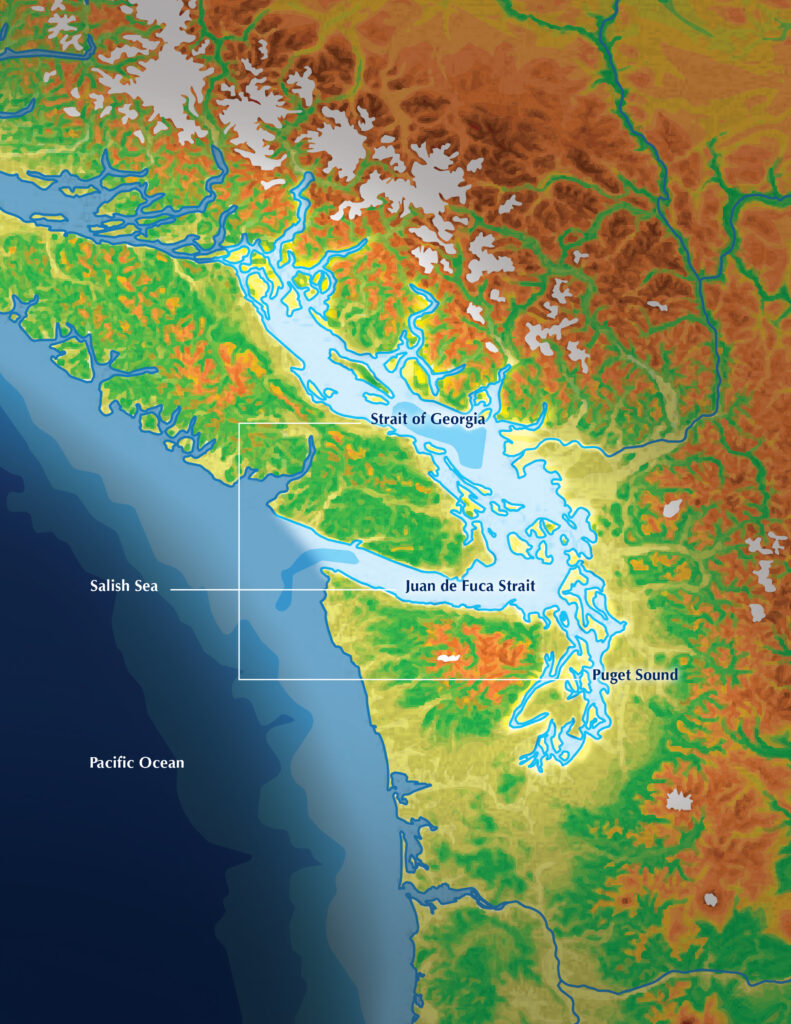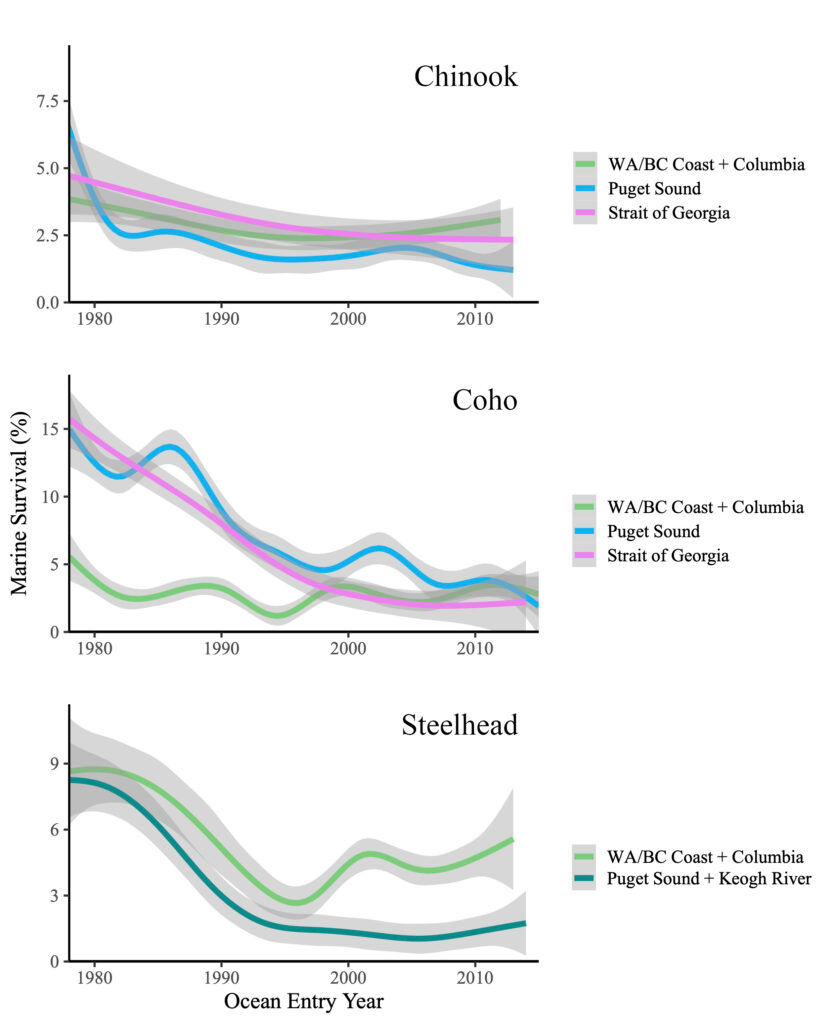Young salmon are dying in the Salish Sea.
In a five-year, international research effort, the Salish Sea Marine Survival Project is finding out why.
The Salish Sea was once a highly productive place for salmon. A keystone species for both fresh and salt water ecosystems, annual salmon runs were at the heart of both environmental cycles and of Tribal and First Nations cultures in the Northwest since time immemorial. These inland marine waters, from the Strait of Georgia to Puget Sound, supported salmon and steelhead populations of remarkable abundance.
Beginning in the late 1970s, that changed abruptly. Marine survival rates for Chinook, Coho, and steelhead, meaning the number of fish which survive the migration from river to ocean and return as adults, dropped sharply throughout the Salish Sea.
“Something is definitely going on in the (Salish Sea) marine environment that is negatively affecting salmon, steelhead and forage fish; things are changing and we need to understand how and why.”
Michael Grayum, director, Northwest Indian Fisheries Commission, 2014
The Problem
In spite of major efforts to reduce harvest, restore habitat, and improve hatchery practices, Chinook, Coho, and steelhead in the Salish Sea have not recovered. Some populations have dropped by 90%, threatening salmon-dependent economies and cultural traditions, Tribal treaty rights, and the entire ecosystem.
The same species in other regions have not followed the same persistent pattern of decline. Researchers and managers therefore suspected that the salmon crisis of the Salish Sea originates in these unique inland marine waters, early in their life cycle.
For young salmon, the first few months in salt water are a critical period in determining whether they will make it to maturity. To understand why fewer salmon are returning to the Salish Sea as adults, we needed to find out why so few juveniles are surviving
Click here to read about the urgent questions behind the project
“A difference between 1% and 3%, or 1% and 5% [of juveniles surviving] makes a huge difference in the number of fish coming back.”
– Dr. Richard Beamish, Fisheries and Oceans Canada, 2014
The Effort
Led by Long Live the Kings and the Pacific Salmon Foundation, the Salish Sea Marine Survival Project launched an international research effort at an unprecedented, ecosystem-wide scale. Two hundred scientists from more than 60 organizations in the United States, Canada, and Tribal nations conducted research between 2014 and 2019.
From these studies, we’ve built an essential foundation of knowledge about the interrelated dynamics of the Salish Sea ecosystem, and what happens to juvenile salmon as they encounter it for the first time.
Click here to learn more about the international collaboration studying marine survival
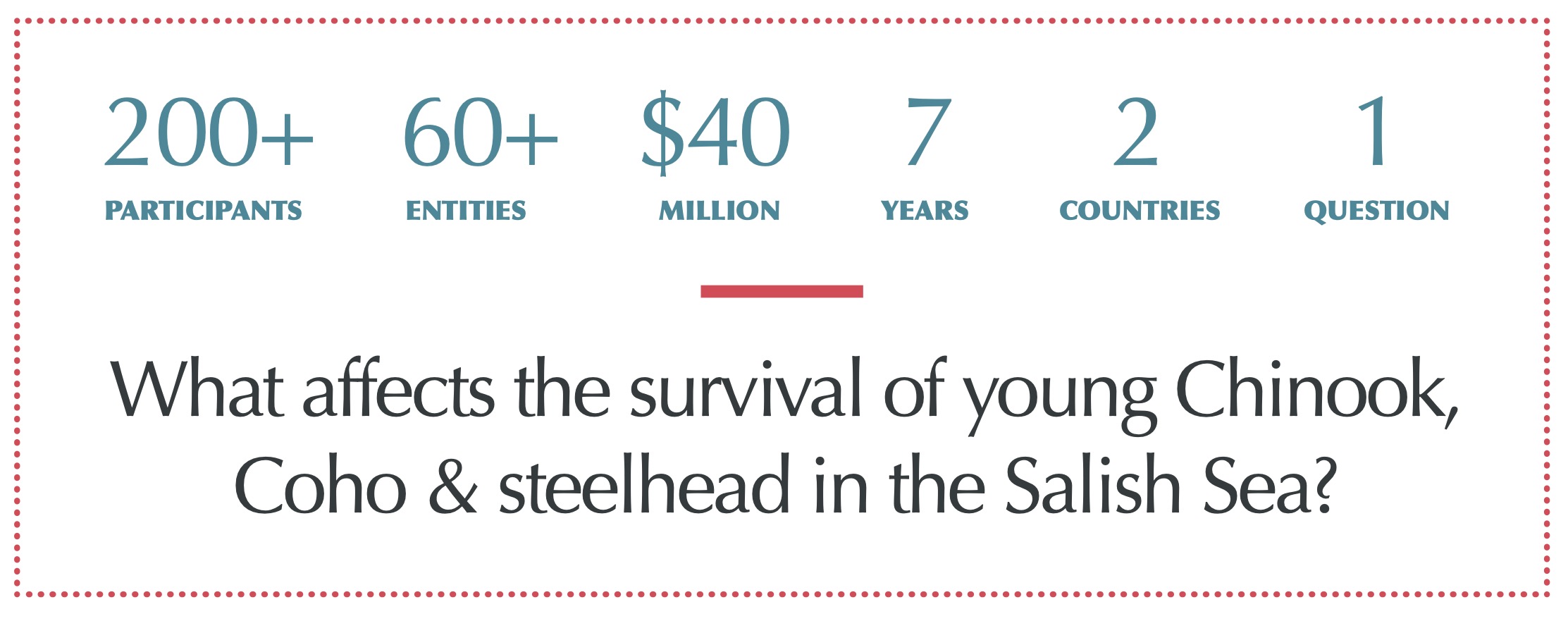
The Findings
As expected, juvenile salmon confront a wide range of interconnected threats on their migration. The key challenge for the Salish Sea Marine Survival Project was to identify which conditions in Puget Sound and the Strait of Georgia are driving many salmon toward extinction.
From our research, two sets of factors emerged across the Salish Sea as the most significant problems killing juvenile salmon. These pressures come from both sides of the food web: climate-driven changes to the salmon food supply, and a dramatic increase in predators.
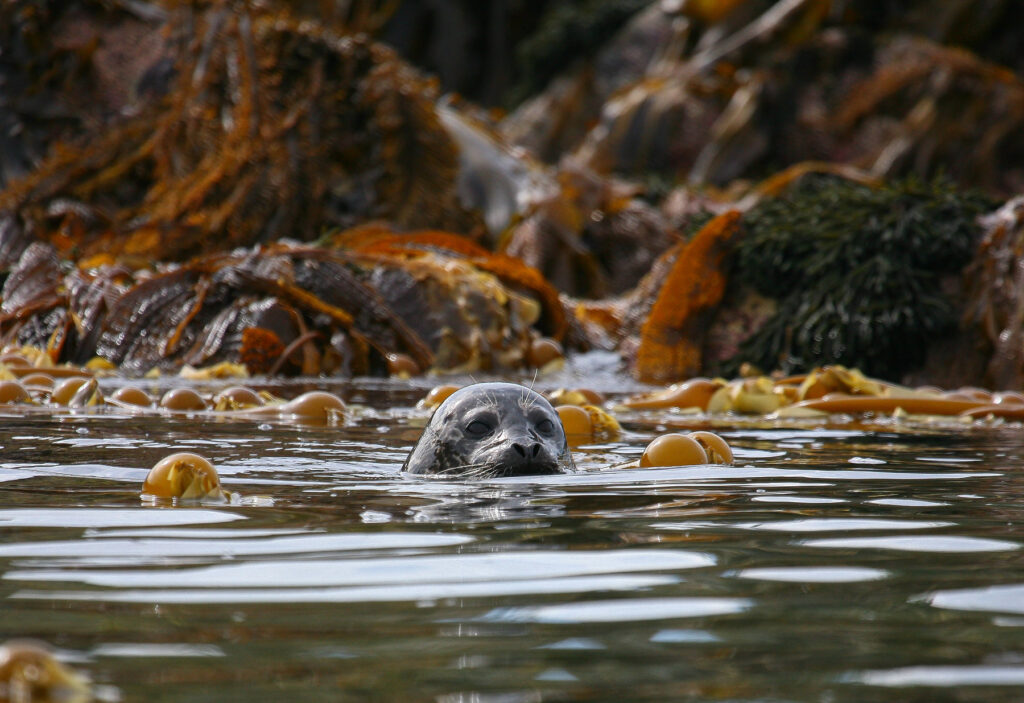
Photo Credit: PSF
Changing Food Supply
As young salmon grow, they consume larger and larger prey. The key to their growth and survival is finding enough of the right food at the right time. Our studies found that changes in plankton and forage fish at the base of the food web mean that less food is available for juvenile salmon when they need it. They may also be competing among themselves for food.
Evidence suggests that weather and ocean conditions are closely related to salmon food supply. As climate change intensifies, understanding these patterns is critical to predicting and managing salmon survival.
Another key finding of the project was the importance of forage fish like herring in juvenile salmon survival, both as a source of prey for the salmon, and as a “prey buffer,” providing alternative food for predators.
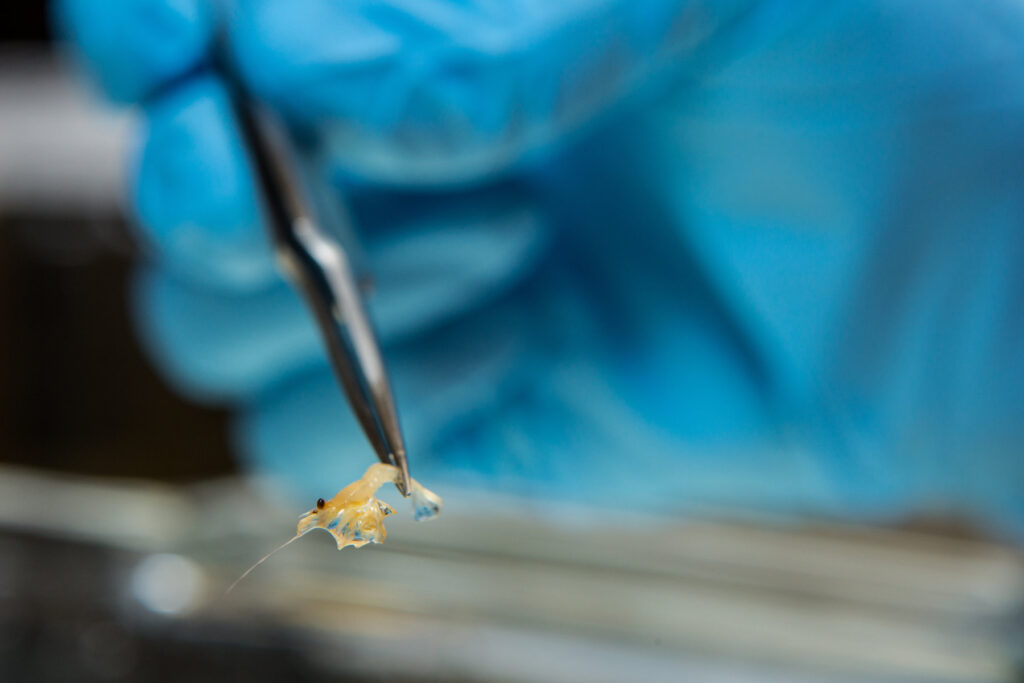
Photo Credit: Matt Hagen
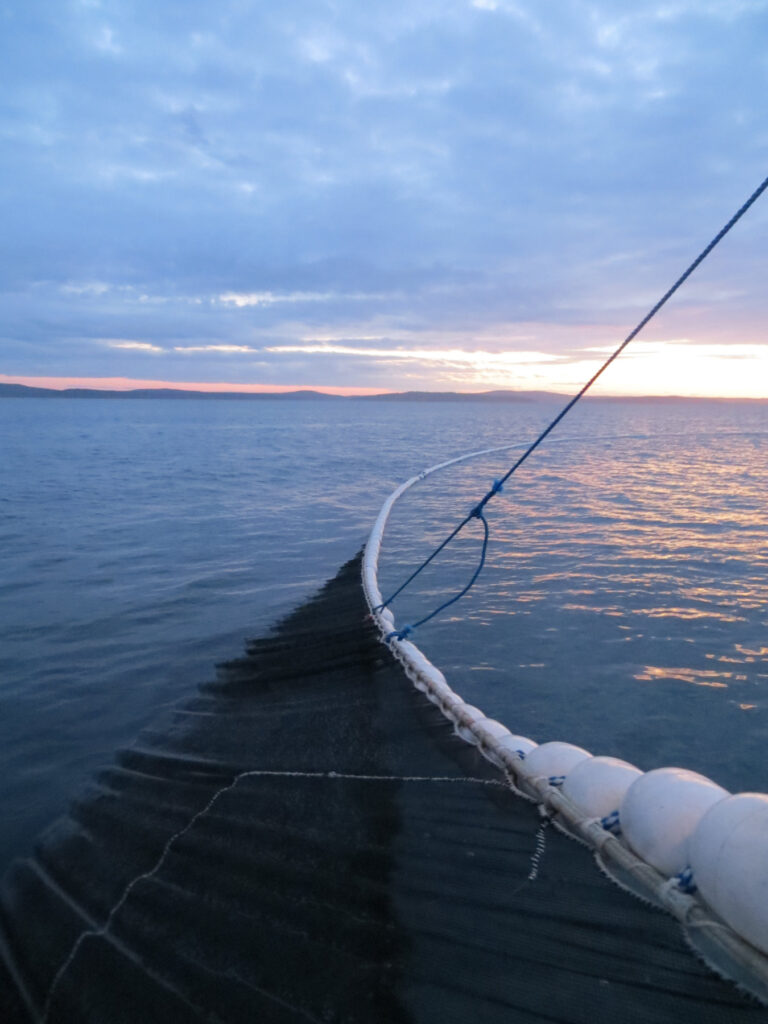
Photo Credit: PSF
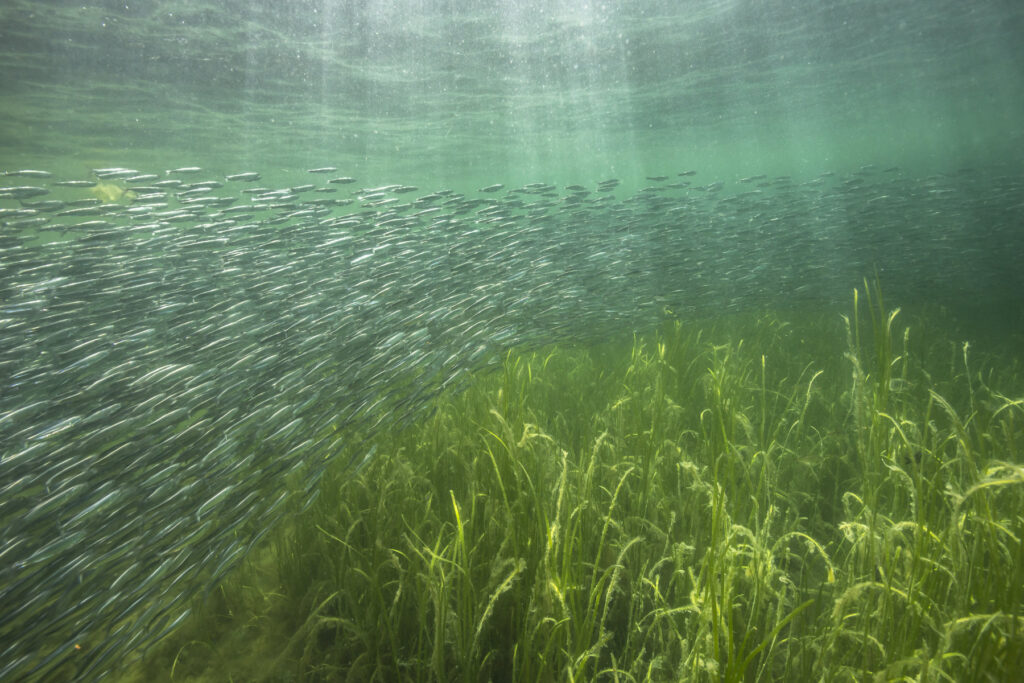
Photo Credit: Ryan Miller
Increasing Predation
An increase in the number of predators, especially harbor seals, is a major direct cause of juvenile salmon mortality. Harbor seal populations in the Salish Sea have increased at least seven-fold since marine mammal protections were instituted in the 1970s. Studies suggest that over 40 percent of juvenile Chinook and Coho are eaten by seals in some areas. Barriers to migration, like the Hood Canal Bridge in Washington State, add to the threat, creating choke points where predators have easy access to salmon. In addition, changes in the availability of forage fish, such as herring, may result in seals eating more juvenile salmon.
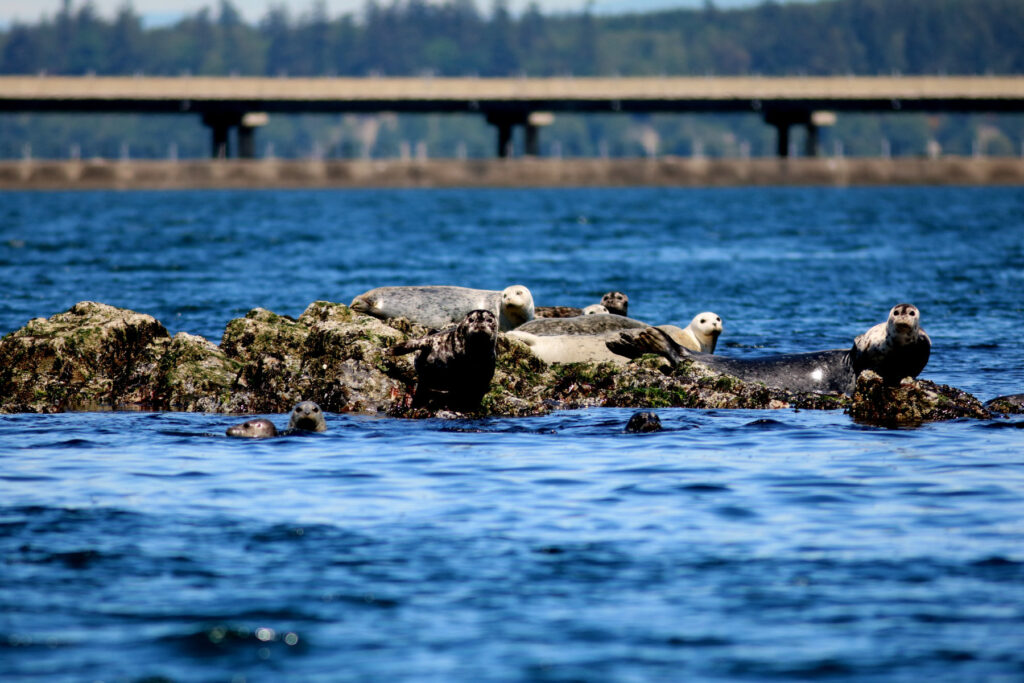
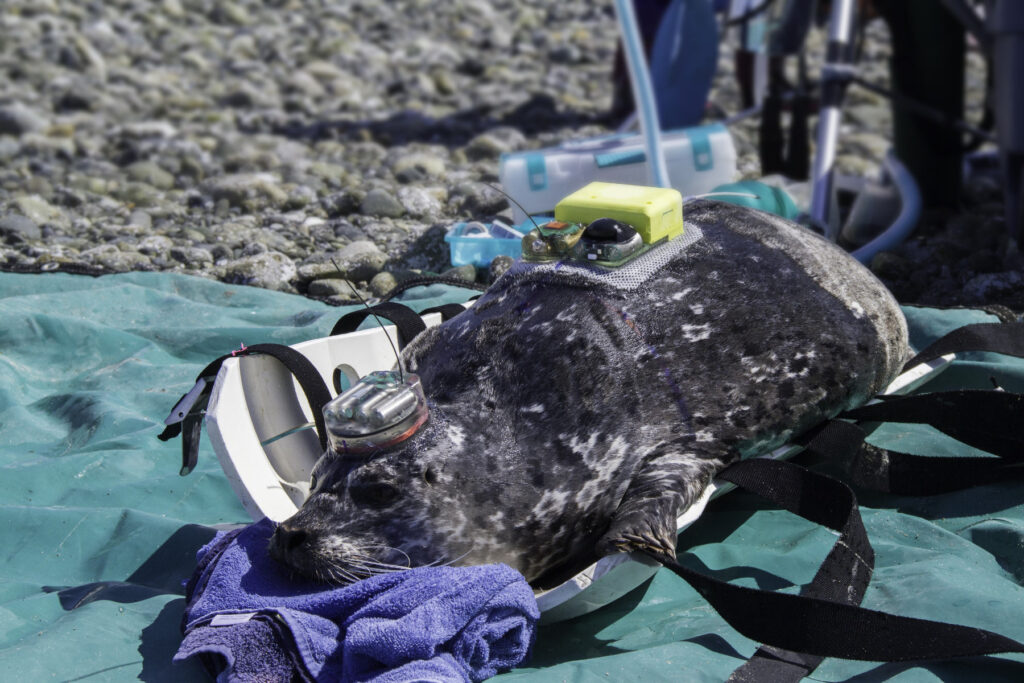
Harbor seal populations have boomed. While salmon and steelhead are a small portion of a seal’s diet, the size of the seal population means they collectively consume a large number of salmon. Photo credit: Laura Bogaard for Oceans Initiative and Pacific Salmon Foundation
The angling community has long known of the effect increased predation has on salmon and steelhead smolts, but until now, the lack of available forage was not brought to light and explained in ways that were widely understood. These two valuable points, backed by scientific research, must be heeded…to take bold action to help recover our fish populations.
Ryley Fee, Puget Sound Anglers, 2021
Other factors: habitat loss, pollution, and disease
In some cases, our research found that local effects from pollution, disease, and habitat loss are also contributing to declining survival. Disease and contaminants in both fresh and saltwater are killing some salmon directly, as well as making them more susceptible to predators. The loss of healthy habitat in estuaries and nearshore environments adds to these problems, especially critical for young Chinook.
These factors overlap and accumulate. A fish carrying pollutants from its birth river, through a heavily developed estuary with little nutritious food available, in a year with few herring available for seals to eat, faces tremendous hurdles to survival.


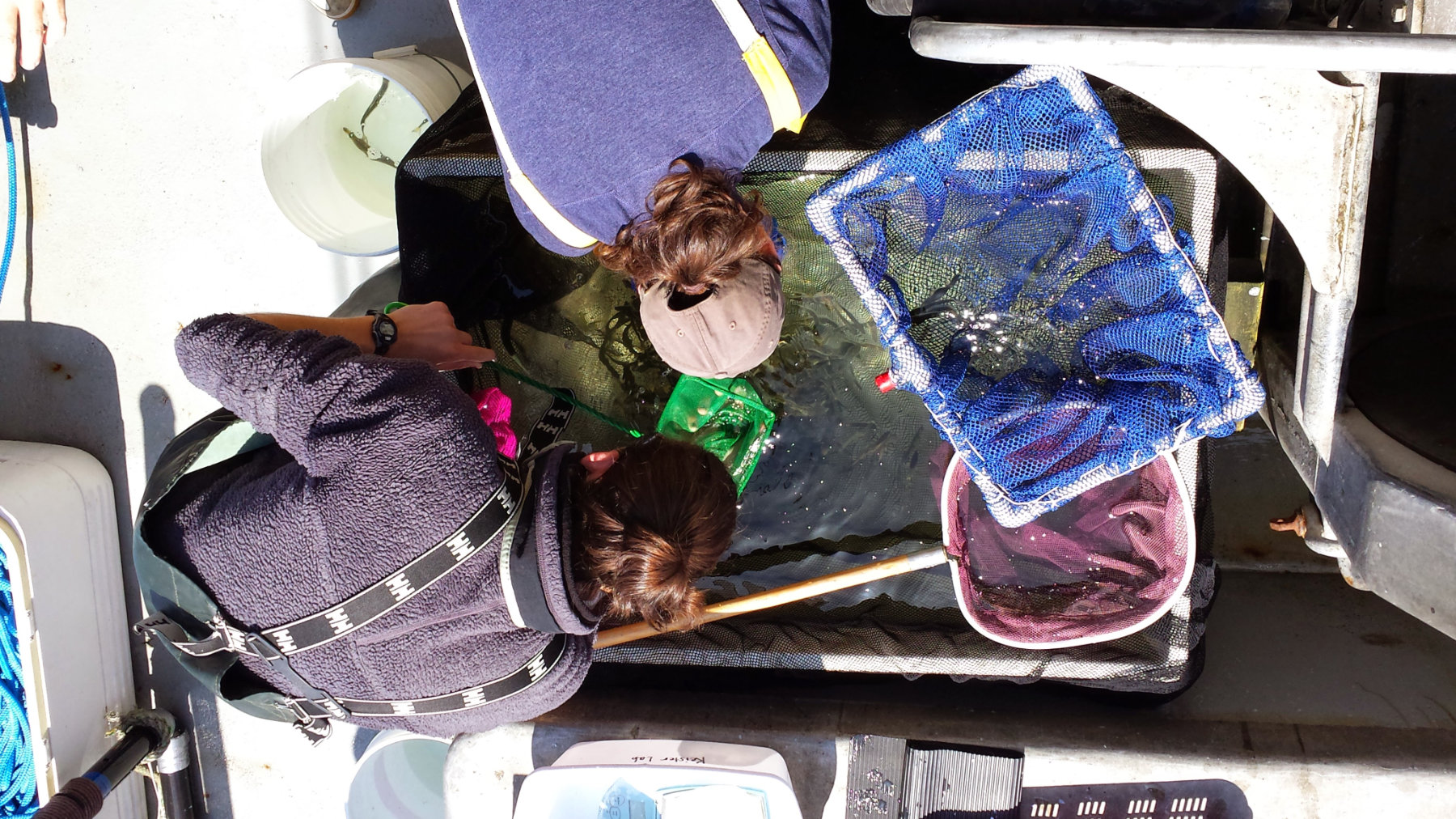
Satellite imagery of the relatively intact Cowichan Estuary in British Columbia (left), and the heavily developed Commencement Bay at the mouth of the Puyallup River in Washington (right), showing the difference in habitat condition. Imagery by Earthstar Geographics.
“We can create a future where the Salish Sea is once again a healthy, productive place for salmon and steelhead.”
Jacques White, Long Live the Kings, 2021
What can we do?
Our findings point to multiple and deeply intertwined causes of declining marine survival. That means there is no one “silver bullet” solution for Salish Sea salmon. Thanks to the Marine Survival Project, a network of strategies is underway to help give our salmon a better chance.
The project leads are already putting our research into action. Efforts are underway to increase food for young salmon, reduce predation by seals, and to make wild and hatchery salmon more resilient by improving their diversity through habitat restoration and new hatchery rearing strategies. Other efforts are focused on reducing contaminants and identifying diseases, especially as climate change continues to alter our environment.
Project partners are also building on the Marine Survival Project to advance and apply new science. Monitoring of salmon, forage fish, plankton and ocean conditions continues to expand around the Salish Sea. These data will not only continue to help us navigate ecosystem change, they can improve forecasts of salmon runs and guide harvest and management decisions.
The work of the Salish Sea Marine Survival Project is critical to our region’s marine ecosystem as a whole. The plight of our young salmon is a response to dramatic and ongoing ecosystem changes. We strongly recommend that a formal transboundary research structure be established to continue funding and facilitating collaborative ecosystem science partnerships. One of the most important aspects of the Salish Sea Marine Survival Project was the broad coalition of professional and community researchers it established. We must maintain this style of science to continue to evolve our relationship with our precious Salish Sea ecosystem.
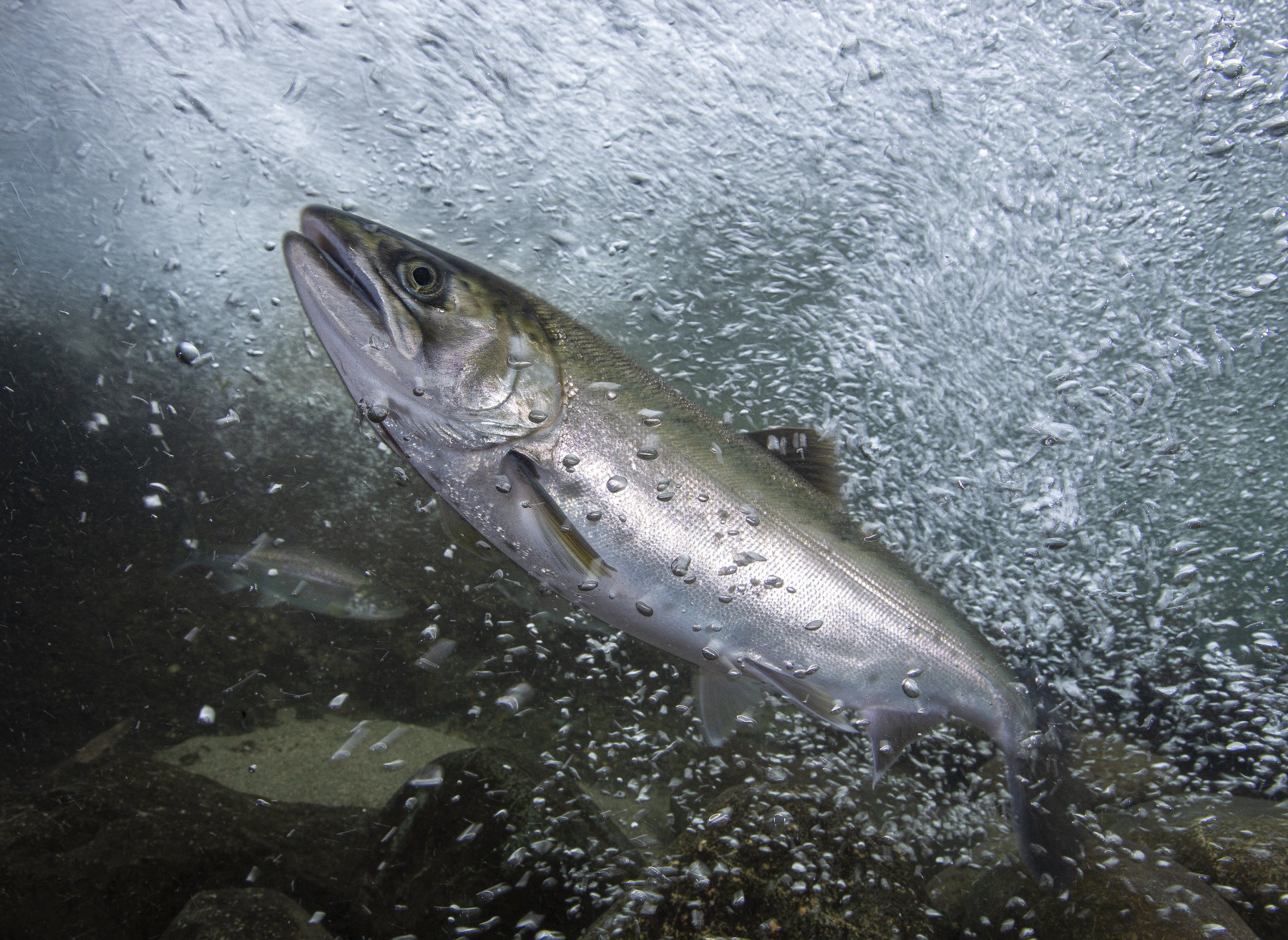
Salmon survival is a team effort. We need your help.
Here are a few of the ways you can build a future for Salish Sea salmon.
Just as salmon are part of an interdependent ecosystem, salmon recovery will take continued partnership and collaboration. The members of the Salish Sea Marine Survival Project are working together to test and implement management actions and to continue critical research. With your help, we can realize a healthy future for salmon and steelhead in the Salish Sea.
Support ongoing research and recovery by making a financial contribution. Donate online via the Pacific Salmon Foundation in Canada and Long Live the Kings in the United States.
Let your local and regional leaders know that investing in salmon recovery is important to you for the sake of a healthy, prosperous, and sustainable Salish Sea.
Volunteer with a habitat restoration project, join a community science team, and choose salmon-safe products for your home and yard.
Join the conversation and help spread awareness that salmon need our help. Share this story with friends and family, and follow Long Live the Kings and the Pacific Salmon Foundation online as we continue to learn and apply new science for salmon recovery.
These findings confirm that the nearshore environment has too many predators and not enough prey for juvenile salmon and steelhead to survive. If we hope to recover salmon, we must continue to study marine survival, while also working to restore estuary habitat and protect water quality.
Lorraine Loomis, Chair, Northwest Indian Fisheries Commission, 2021
Thank you to our many partners for their essential support of this effort.
Credits
Project Coordinators
Dr. Isobel Pearsall (Pacific Salmon Foundation) and Michael Schmidt (Long Live the Kings)
Map Illustration
Ken Jones
Map Imagery
Earthstar Geographics
Photos
Laura Bogaard, Matt Hagen, Eiko Jones, Jack McDermott, Mitch Miller, Ryan Miller, Pacific Salmon Foundation, Long Live the Kings
